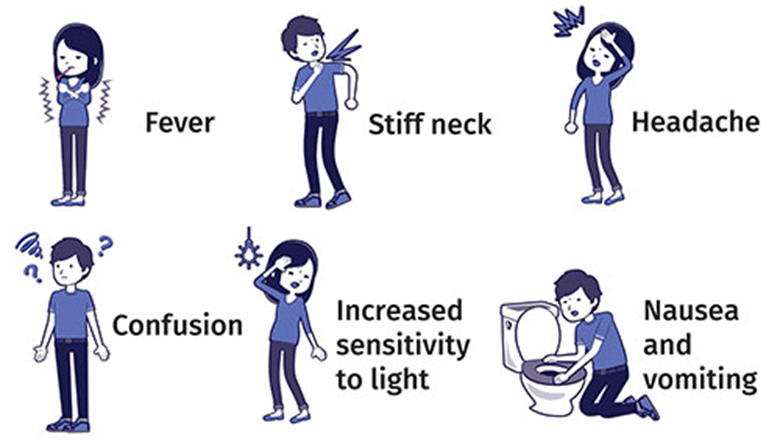RN Medical Surgical HESI
RN Medical Surgical HESI ( 44 Questions)
A client presents with the onset of a severe headache, fever, nuchal rigidity, and a petechial rash on arms and legs. The nurse recognizes the client is exhibiting symptoms of which condition?
Rocky Mountain spotted fever is not the most likely condition for the client who has a severe headache, fever, nuchal rigidity, and a petechial rash on arms and legs. Rocky Mountain spotted fever is a bacterial infection transmitted by ticks that causes a distinctive rash that usually begins on the wrists and ankles and spreads to the rest of the body. The rash is not limited to the arms and legs, and the client may also have other symptoms such as nausea, vomiting, abdominal pain, and muscle aches.
Intracerebral hemorrhage is not the most likely condition for the client who has a severe headache, fever, nuchal rigidity, and a petechial rash on arms and legs. Intracerebral hemorrhage is a type of stroke that occurs when a blood vessel bursts inside the brain, causing bleeding and swelling. The rash is not a typical sign of intracerebral hemorrhage, and the client may also have other symptoms such as weakness, numbness, vision loss, confusion, and loss of consciousness.
Cerebrovascular accident (CVA) is not the most likely condition for the client who has a severe headache, fever, nuchal rigidity, and a petechial rash on arms and legs. CVA is another term for stroke, which occurs when the blood supply to a part of the brain is interrupted, causing brain tissue damage. The rash is not a common sign of CVA, and the client may also have other symptoms such as facial drooping, slurred speech, difficulty swallowing, paralysis, and cognitive impairment.
Meningococcal meningitis is the most likely condition for the client who has a severe headache, fever, nuchal rigidity, and a petechial rash on arms and legs. Meningococcal meningitis is a bacterial infection that causes inflammation of the membranes that cover the brain and spinal cord. The rash is a characteristic sign of meningococcal meningitis, which can appear as small red or purple spots that do not fade when pressed. The client may also have other symptoms such as nausea, vomiting, sensitivity to light, confusion, and seizures.

Choice A reason: Rocky Mountain spotted fever is not the most likely condition for the client who has a severe headache, fever, nuchal rigidity, and a petechial rash on arms and legs. Rocky Mountain spotted fever is a bacterial infection transmitted by ticks that causes a distinctive rash that usually begins on the wrists and ankles and spreads to the rest of the body. The rash is not limited to the arms and legs, and the client may also have other symptoms such as nausea, vomiting, abdominal pain, and muscle aches.
Choice B reason: Intracerebral hemorrhage is not the most likely condition for the client who has a severe headache, fever, nuchal rigidity, and a petechial rash on arms and legs. Intracerebral hemorrhage is a type of stroke that occurs when a blood vessel bursts inside the brain, causing bleeding and swelling. The rash is not a typical sign of intracerebral hemorrhage, and the client may also have other symptoms such as weakness, numbness, vision loss, confusion, and loss of consciousness.
Choice C reason: Cerebrovascular accident (CVA) is not the most likely condition for the client who has a severe headache, fever, nuchal rigidity, and a petechial rash on arms and legs. CVA is another term for stroke, which occurs when the blood supply to a part of the brain is interrupted, causing brain tissue damage. The rash is not a common sign of CVA, and the client may also have other symptoms such as facial drooping, slurred speech, difficulty swallowing, paralysis, and cognitive impairment.
Choice D reason: Meningococcal meningitis is the most likely condition for the client who has a severe headache, fever, nuchal rigidity, and a petechial rash on arms and legs. Meningococcal meningitis is a bacterial infection that causes inflammation of the membranes that cover the brain and spinal cord. The rash is a characteristic sign of meningococcal meningitis, which can appear as small red or purple spots that do not fade when pressed. The client may also have other symptoms such as nausea, vomiting, sensitivity to light, confusion, and seizures.

